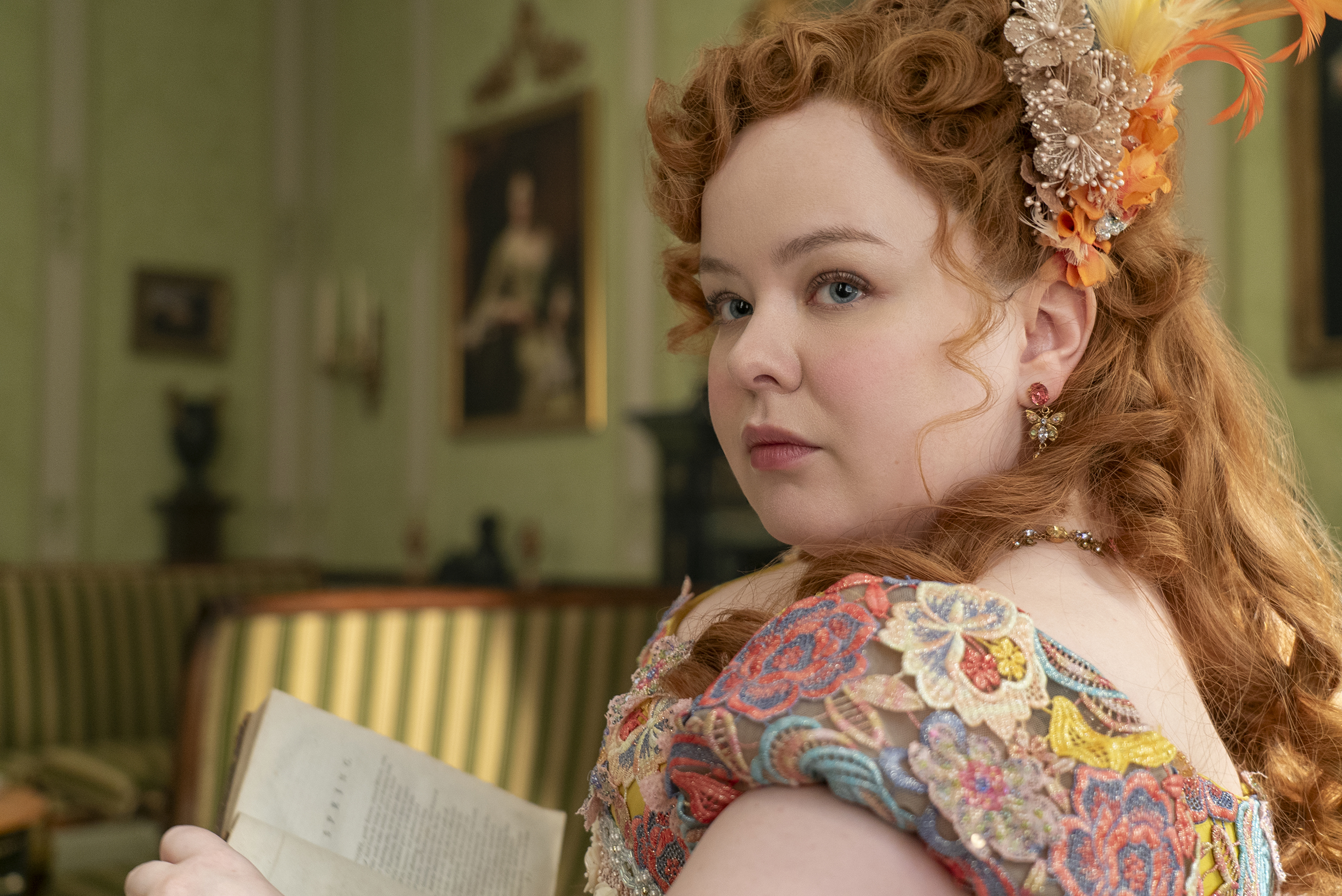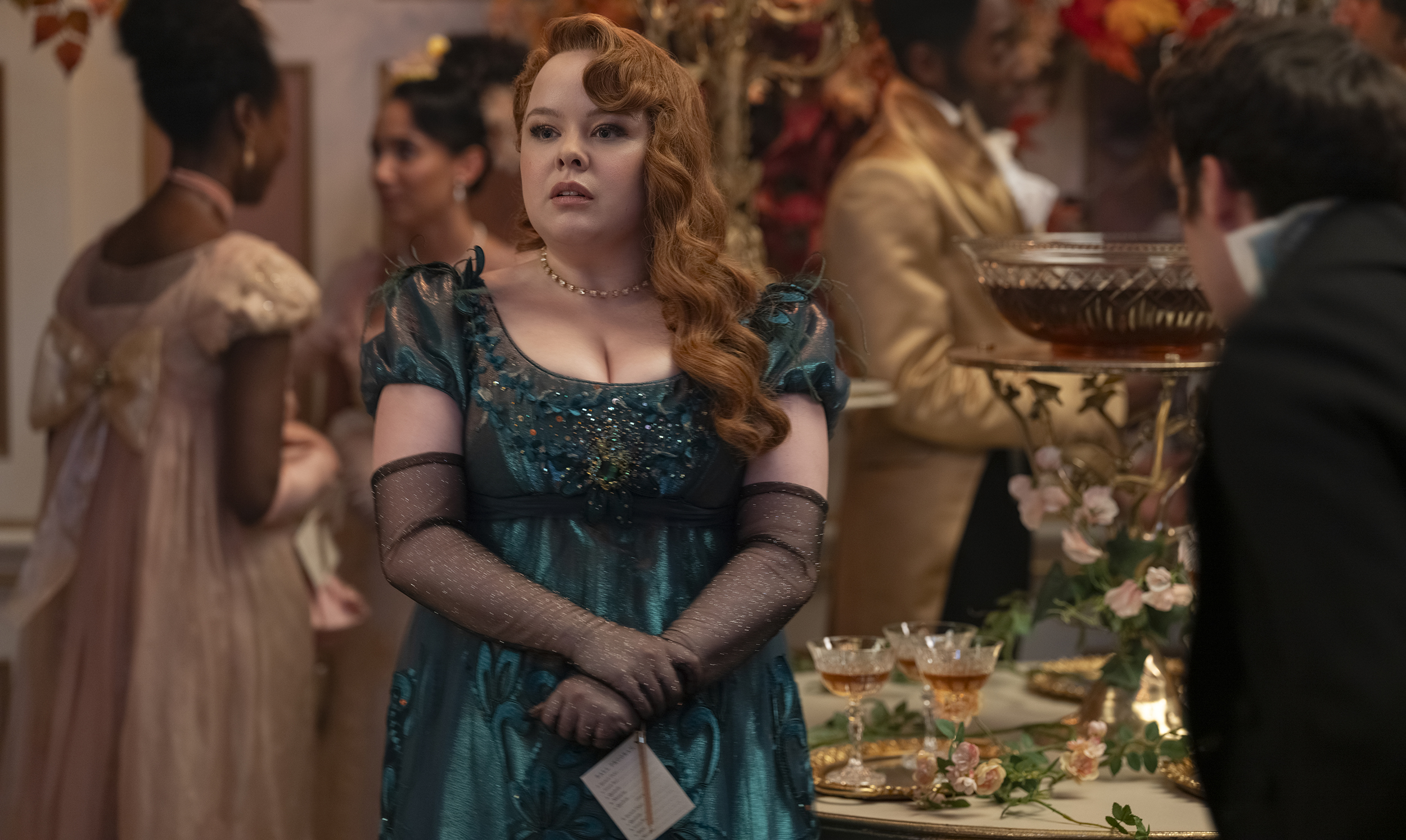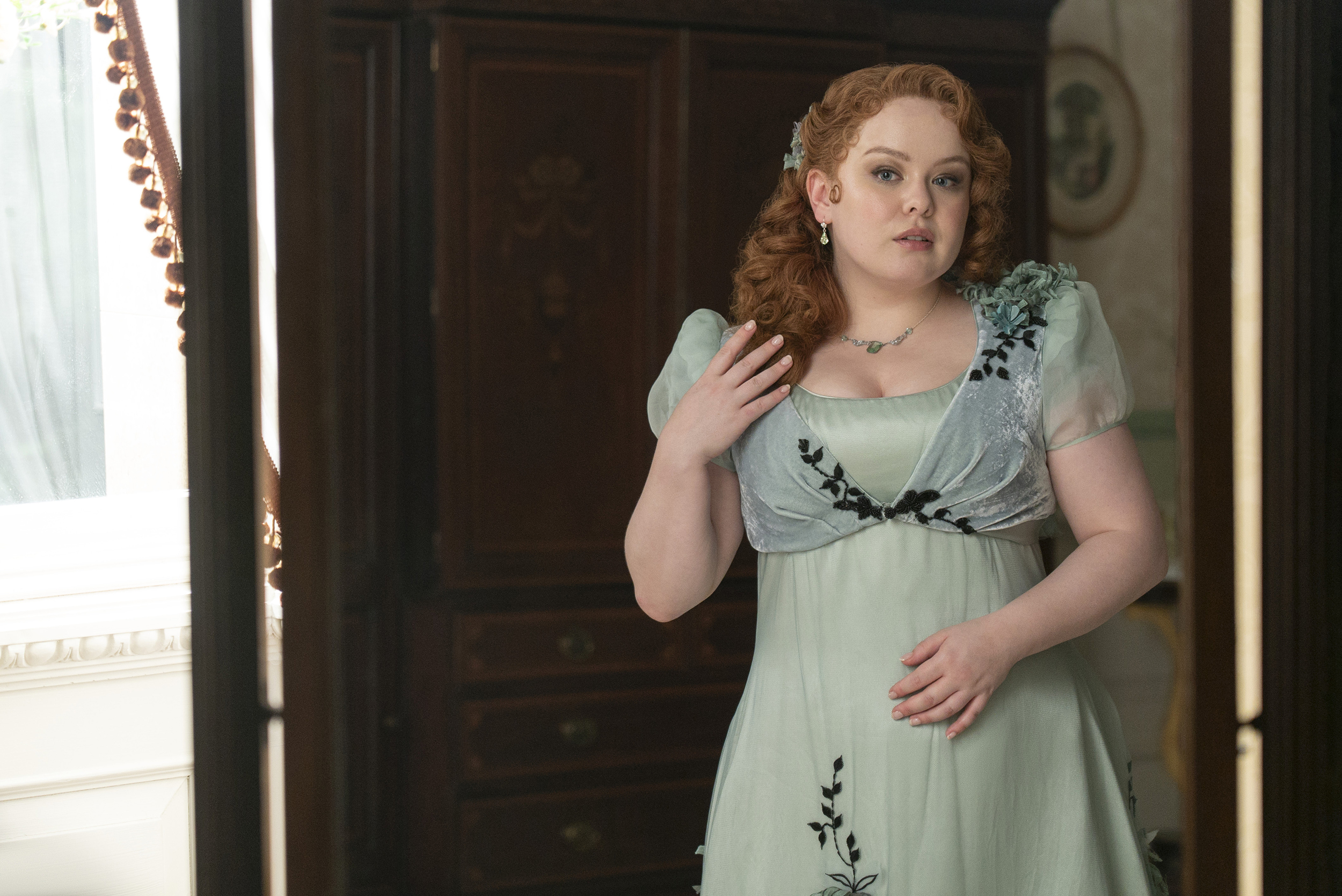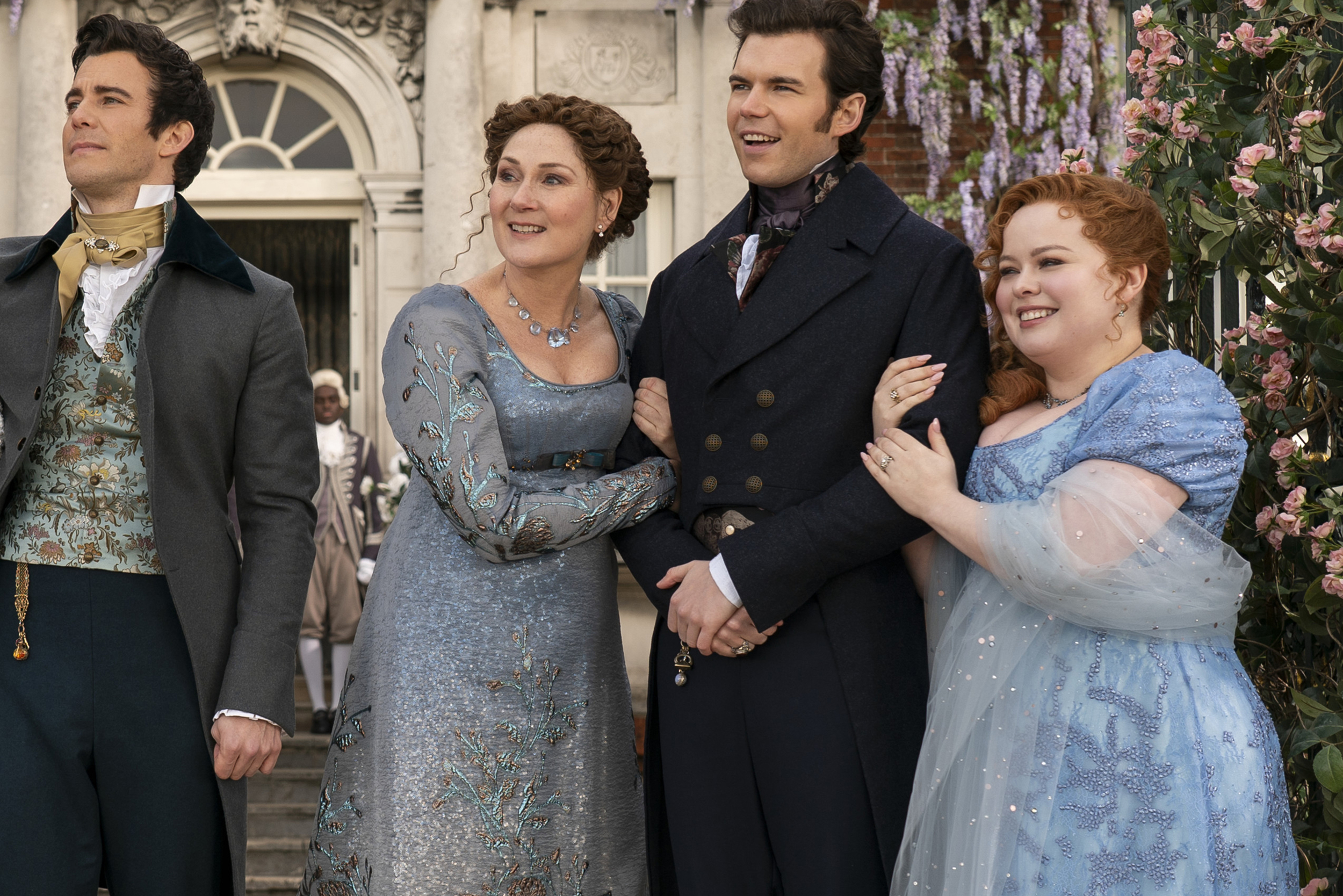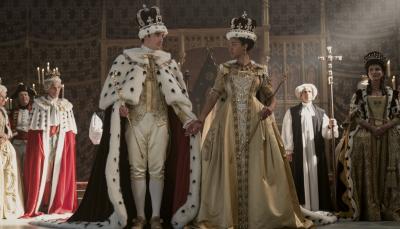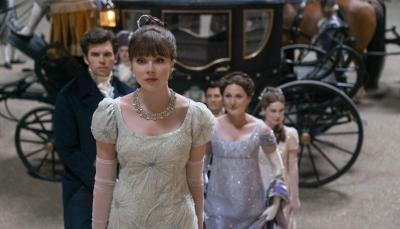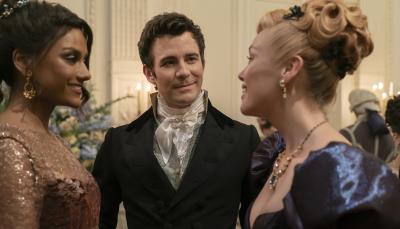Bustling With 'Bridgerton': Penelope Featherington's Transformation Into A Glamorous Wallflower
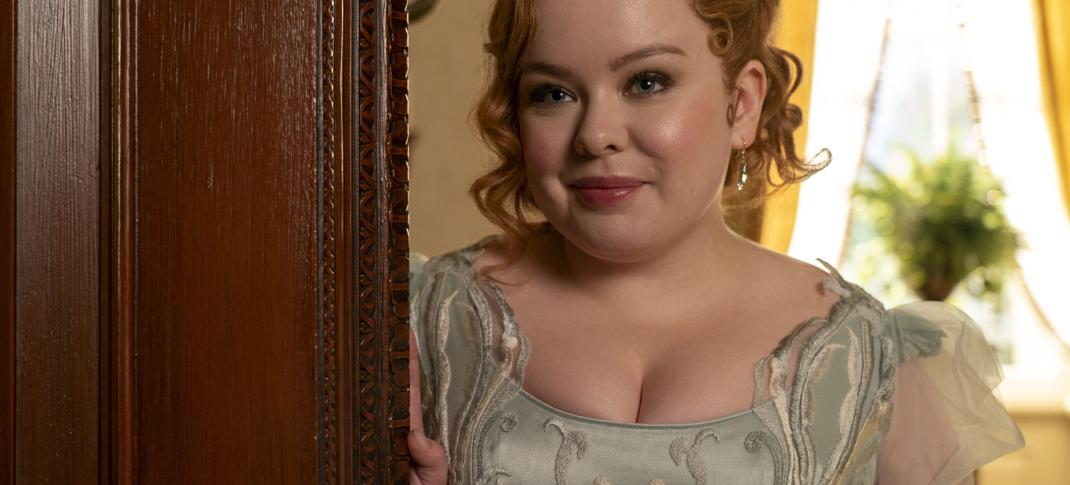
Nicola Coughlan as Penelope Featherington, peeking around the doorway in 'Bridgerton' Season 3
Liam Daniel/Netflix
Welcome to the third issue of Bustling With Bridgerton, a series where we’ll be celebrating and delving into the costumes designed for Bridgerton’s most interesting characters: Queen Charlotte, Eloise Bridgerton, Penelope Featherington, and Cressida Cowper. Between the releases of the season’s two halves, costume designer John Glaser, along with associate costume designer Dougie Hawkes and assistant costume designer Henry Wilkinson, sat down with Telly Visions to chat about the visual inspirations, character and story arcs that they drew on for each character’s looks as her position in the ton and their experiences with the mysterious Lady Whistledown ebb and flow. The first two issues in this series covered developments in Queen Charlotte’s and Eloise Bridgerton’s costumes across the series’ first three seasons. This week, we’re discussing Penelope Featherington’s (Nicola Coughlan) transformation from wallflower to glamour queen of Mayfair.
Previously, On Bridgerton
One of the best things about Bridgerton’s third season, aka the Polin season, is that it’s vindicated all the fans who have been on the “Nicola Coughlan is already very gorgeous!” train. In Julia Quinn’s novel Romancing Mister Bridgerton, Penelope’s glow-up is tied to aging up from 18 to 28, losing weight, and suddenly being worthy of male notice. In Bridgerton, she instead takes a portion of her substantial Lady Whistledown earnings to Genevieve the modiste, banishes citrus shades from her wardrobe palette, and is off to the races.
It’s always good to be reminded that wearing clothes that make one feel great is a surefire way to boost one’s confidence. A bit of delicious irony this season is that unbeknownst to the gossip connoisseurs of the ton, Penelope’s fashion and hairstyle updates are funded by the very gossip sheet chronicling their own not-so-secret assignations and machinations, all filtered through Penelope’s sharp-eyed lens for behavioral absurdity.
By the conclusion of the season finale, Penelope’s transformation is complete. She and Colin are blissfully married, and she has gained the confidence to come forward as Lady Whistledown, apologize to those she’s hurt, and embark on the next chapter of her life as an author of renown.
Noir Bombshell Aesthetic, Regency Roots
Glaser points out that in previous seasons, Penelope’s “mother dictated her fashion,” but now that “she’s got her own money and is gaining power,” she’s no longer required to match the unified family aesthetic of over-the-top bright, acidic shades and every embellishment available. Lady Featherington’s (Polly Walker) taste leans heavily towards “more is more,” a form of conspicuous consumption designed to signal her family’s wealth and her daughters’ impressive dowries. The marriage mart is about acquiring goods; her daughters are the family commodities.
Penelope’s independent wealth – we learn she had just over 10,000 (approximately $1.1 million in today’s US dollars) saved up by this point in her writing career – ends that chapter of her life. For her third season on the Marriage Mart, she’s determined to dress for herself, which instantly leads to conversations about her new approach. Glaser says, “It was a great chance to empower her with her own look. We thought, what’s the most extreme change we could do?” The costume design team landed on the soft glamour of 1950s stars like Marilyn Monroe, Veronica Lake, and Lauren Bacall. Crucially, Penelope’s transformation did not entail weight loss, instead drawing attention to her hourglass figure and impressive embonpoint. Her updated gowns align with the treatment of Jennifer Ehle’s costumes as Elizabeth Bennett for the BBC’s 1995 adaptation of Pride & Prejudice.
It’s not a perfect overnight change, though. Penelope’s first outing in a non-citrusy gown, a dramatic midnight green affair with a black lace overlay, is ruined when Cressida Cowper (Jessica Madsen) deliberately steps on the hem. We’ll probably never see that color again in Penelope’s wardrobe, and it’s a profoundly relatable moment: sometimes, our first attempts to shake up the status quo fall flat, necessitating good old trial and error.
Regency Bodycon
Despite Penelope’s injunction against the bold colors her family favors doesn’t abolish yellow and green from her closet altogether — instead, the shades are softer rather than visually astringent. Finding the right palette to go with the voluptuous silhouette Glaser settled on became the focus for Season 3. This shift was aided by the insight that Monroe’s 1950s version of bodycon “has still got some Regency to it,” so incorporating it into Penelope’s gowns wasn’t at all visually jarring. Glaser and his team were able to use color for an essential throughline for Penelope’s character, as Queen Charlotte’s relentless pursuit of Lady Whistledown’s true identity continues: the softened colors she wears ensure that “she can still be a wallflower or move around” unnoticed as she gathers gossip for her next issue.
Glaser and his team also reveled in the freedom of a different palette of shades and fabrics for storytelling purposes because “we didn’t want the clothes to tell the story. Sometimes you look at [Penelope’s dress], and you’re not sure whether it’s blue or green or pink because we layered fabrics and didn’t want to give any Easter eggs away.” The element of “smoke and mirrors” allowed them to design looks for Penelope that put her “on the same playing field” as Cressida and Eloise, which was also crucial for the believability of making her noticeable to potential suitors and distinguishing her from her family as a person who knows her own mind.
Penelope's Continuing Style Choices
Having not just won the guy, but dazzling him into taking a rather modern view of his wife’s career, we can’t wait to see where Penelope Bridgerton’s sartorial vision takes her. There’s unlikely to be much in the way of now-classic Bridgerton blue in her closet — Glaser was enthusiastic on the subject of staying far away from color as a routine indicator of character arcs and alliances — but perhaps the monarch butterflies released by Philippa at the ball will make a return appearance.
We can easily picture both Penelope and Genevieve taking inspiration from the metaphor of caterpillar-to-butterfly metamorphosis. All we can say with confidence is that come Season 4; we hope she and Colin don't wind up sitting out the season, as some of the other married couples have done in the past.
Bridgerton Seasons 1 through 3 and the Queen Charlotte prequel are streaming on Netflix. Season 4 is in pre-production and will begin filming in the summer of 2024.

